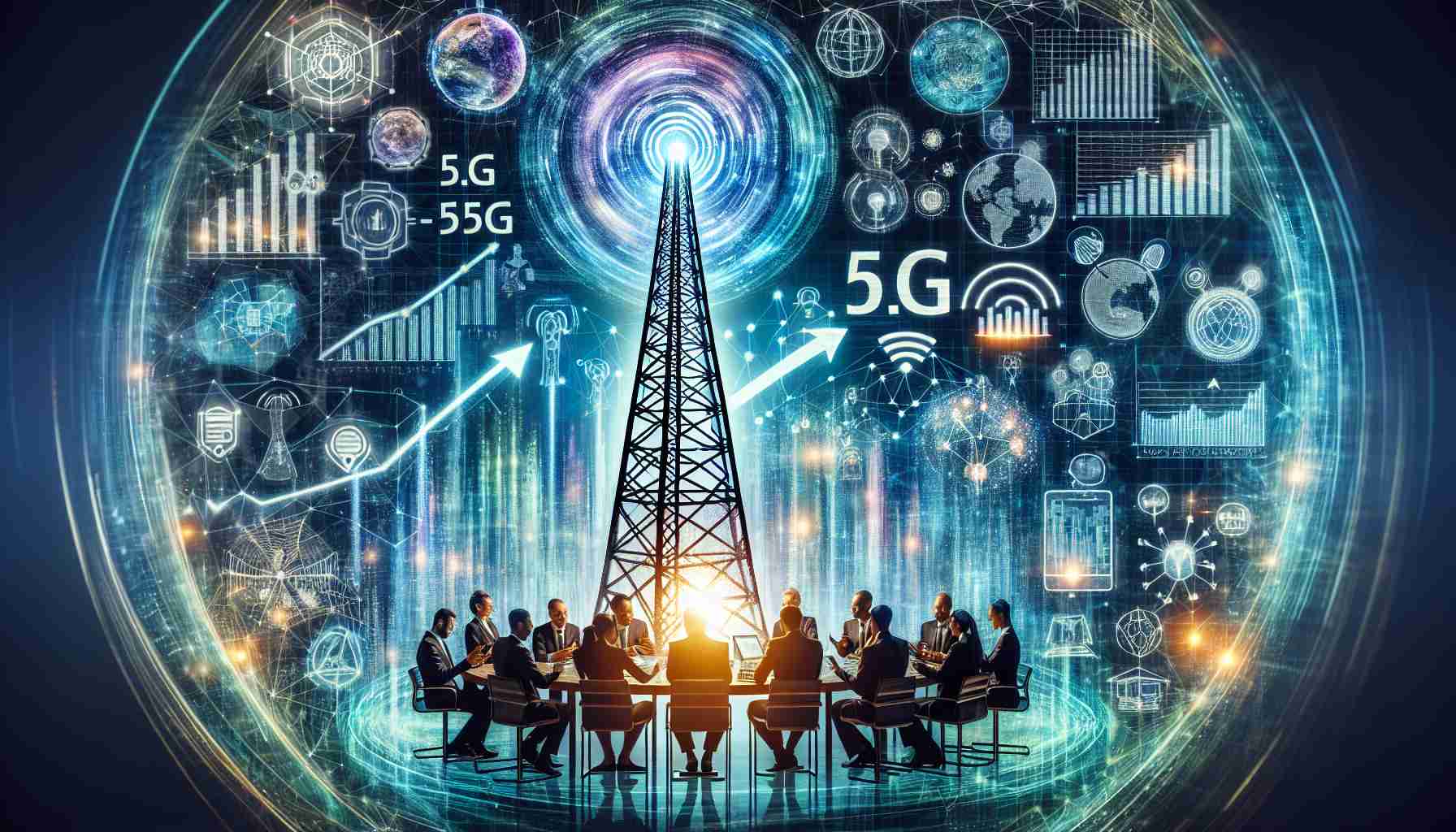Huawei recently hosted the 5G Beyond Growth Summit at MWC Barcelona 2024, where Li Peng, Huawei’s Corporate Senior Vice President and President of ICT Sales & Service, discussed the transformative impact of 5.5G commercialization on carrier success and industry growth. While 5G has already proven to be a game-changer, Li emphasized that 5.5G will further unlock the potential of networks and create new growth opportunities.
As stated by Li, 5G has experienced tremendous success since its commercialization in 2019. In just five years, it has gained an impressive 1.5 billion users worldwide, surpassing the adoption rate of its predecessor, 4G. Currently, 20% of global mobile subscribers are utilizing 5G networks, generating 30% of all mobile traffic and contributing to 40% of mobile service revenue. These numbers highlight the significant impact that 5G has already had on the industry.
Looking ahead, Li emphasized the commercial use of 5.5G in 2024 and its convergence with AI and cloud technologies. This convergence will unlock the potential for new applications and capabilities, enabling carriers to provide even more advanced services to their customers. For carriers to seize these opportunities, Li stressed the importance of focusing on high-quality networking, multi-dimensional monetization, emerging services, and generative AI.
High-quality networks continue to be the foundation of business success. By providing an optimal user experience, carriers can maximize the value of traffic generated by their customers. This has been demonstrated by the successful deployment of Massive MIMO networks in the Middle East, which have led to the widespread adoption of 5G Fixed Wireless Access (FWA) and revenue growth for carriers.
Multi-dimensional monetization is another key strategy for carriers to maximize the value of their networks. By adopting innovative pricing models, such as speed-tiered pricing and add-on packages for specific user needs, carriers can increase their Average Revenue Per User (ARPU). These models have already shown promising results, with carriers in Thailand and China experiencing significant ARPU growth.
The emergence of new services, such as cloud phones and glasses-free 3D, is also driving sustainable growth in the industry. Consumers are increasingly interested in value-added functions and real-time experiences, creating opportunities for carriers to offer innovative services. Additionally, the adoption of 5G in various industries, with over 50,000 private 5G network use cases in China alone, opens new avenues for carriers to tap into the B2B market.
Finally, generative AI is set to revolutionize the mobile industry by enhancing mobile phone capabilities. With global AI mobile phone shipments projected to reach 170 million in 2024, next-generation AI phones will offer more powerful storage, display, and imaging capabilities. This advancement will lead to a new era of intelligence where AI-powered smartphones are commonplace.
In conclusion, the commercialization of 5.5G will bring about significant transformations in the carrier industry, enabling carriers to unlock new growth opportunities and provide enhanced services to their customers. By focusing on high-quality networking, multi-dimensional monetization, emerging services, and generative AI, carriers can ensure their success in this rapidly evolving landscape.
FAQ Section:
1. What is 5.5G?
5.5G refers to the next level of mobile network technology that will build upon the existing 5G network. It aims to further unlock the potential of networks and create new growth opportunities.
2. How successful has 5G been so far?
Since its commercialization in 2019, 5G has gained 1.5 billion users worldwide, surpassing the adoption rate of its predecessor, 4G. Currently, 20% of global mobile subscribers are utilizing 5G networks, generating 30% of all mobile traffic and contributing to 40% of mobile service revenue.
3. What is the convergence of 5.5G with AI and cloud technologies?
The convergence of 5.5G with AI and cloud technologies will enable carriers to provide even more advanced services to their customers. It will unlock the potential for new applications and capabilities, leading to the development of innovative services.
4. How can carriers maximize the value of their networks?
Carriers can maximize the value of their networks by focusing on high-quality networking. By providing an optimal user experience, carriers can maximize the value of traffic generated by their customers.
5. How can carriers increase their Average Revenue Per User (ARPU)?
Carriers can increase their ARPU by adopting innovative pricing models, such as speed-tiered pricing and add-on packages for specific user needs. These models have shown promising results, leading to significant ARPU growth in countries like Thailand and China.
6. What are some emerging services driving growth in the industry?
Emerging services like cloud phones and glasses-free 3D are driving sustainable growth in the industry. Consumers are increasingly interested in value-added functions and real-time experiences, creating opportunities for carriers to offer innovative services.
7. How is generative AI revolutionizing the mobile industry?
Generative AI is enhancing mobile phone capabilities, leading to more powerful storage, display, and imaging capabilities. This advancement will result in a new era of intelligence where AI-powered smartphones become commonplace.
Definitions:
– 5G: The fifth generation of wireless network technology that provides faster speeds, lower latency, and greater capacity compared to previous generations.
– 4G: The fourth generation of wireless network technology that provides faster data transfer speeds and improved network capacity compared to 3G.
– Convergence: The coming together of different technologies, industries, or services to create new opportunities and capabilities.
– Monetization: The process of generating revenue or profits from a product, service, or network.
– Average Revenue Per User (ARPU): A key performance indicator that measures the average revenue obtained from each customer.
– B2B: Business-to-business, referring to commerce between businesses rather than between a business and individual consumers.
– AI: Artificial Intelligence, the simulation of human intelligence processes by machines, typically computer systems.
– Mobile phone shipments: Refers to the number of mobile phones being shipped or sold.
– Rapidly evolving landscape: Indicates that the carrier industry is undergoing significant changes and developments at a fast pace.
Related Links:
– Huawei Official Website
The source of the article is from the blog reporterosdelsur.com.mx
